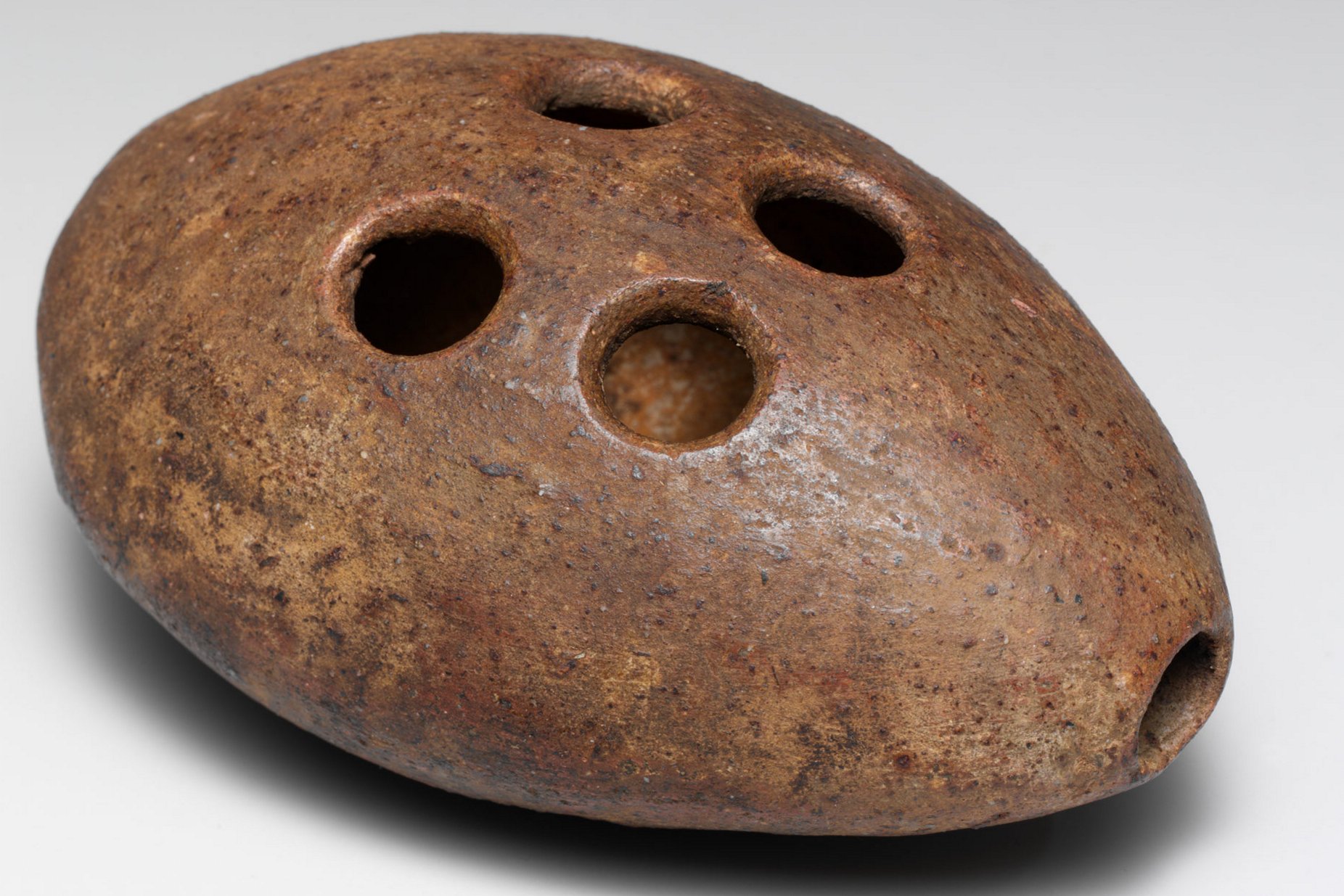
|
Chinese Musical Instruments - Instrument 29
Xun - Wind Instrument
The xun is an egg-shaped aerophone, containing at least three finger holes in
front and two thumb holes in back. It has a blowing hole on top and can have up
to ten smaller finger holes, one for each finger.
The origin of this unique wind
instrument dates back to the Stone Age and has much to do with early Chinese
hunting practices. During ancient times, people often tied a stone or mud
ball to the rope that was used for hunting wild animals. Some of the balls were
hollow, which allowed it make many sounds when thrown. Most people found it
enjoyable and learned how to blow air into it.
The use of xun in the Chinese history was found mainly in the performance of
palace music. However, the sound of xun is also associated as the symbol of
respectable hermits, lady in sorrow, or heroes at the end of their strength, or
to make solemn music within the royal court. The sound of xun represents a
particular beauty, which combines with loneliness, desolate and elegance. It is
the embodiment of the unique Chinese aesthetic conceptions.
|
